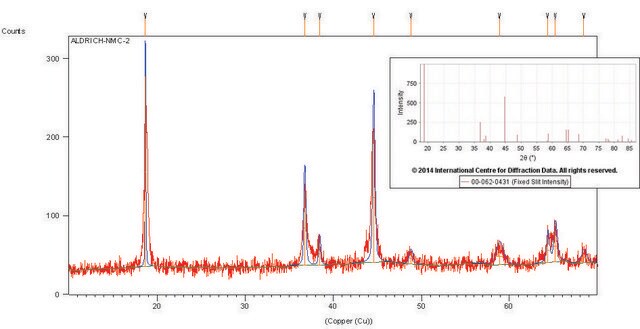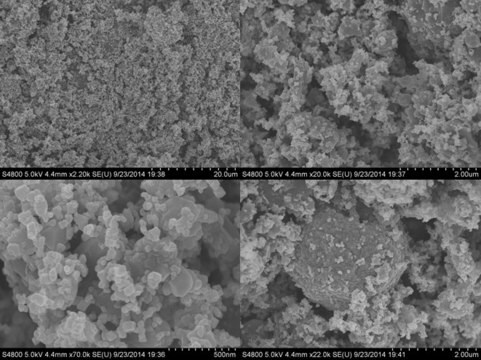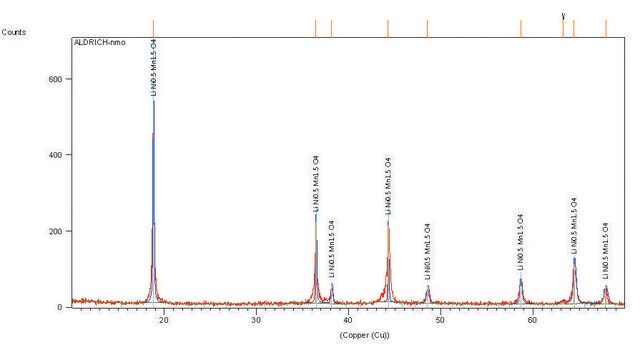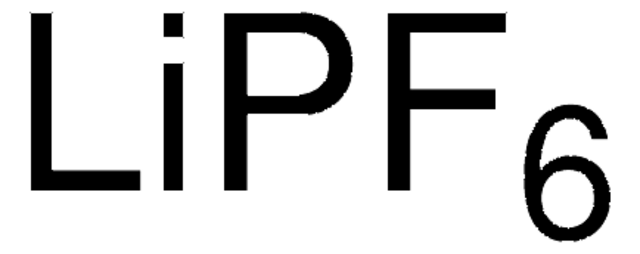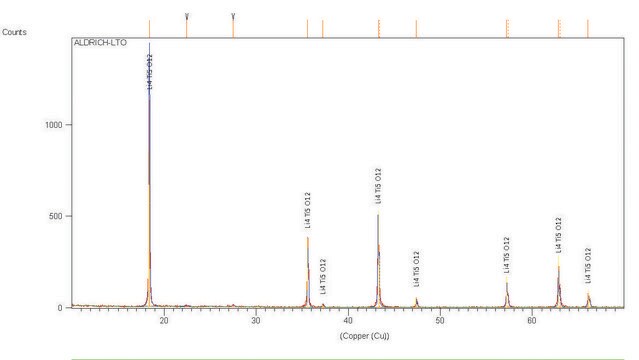442704
Lithium cobalt(III) oxide
99.8% trace metals basis
Synonym(s):
Lithium cobaltite
About This Item
Recommended Products
grade
battery grade
assay
99.8% trace metals basis
form
powder
mol wt
Mw 97.87 g/mol
composition
LiCoO2
greener alternative product characteristics
Design for Energy Efficiency
Learn more about the Principles of Green Chemistry.
sustainability
Greener Alternative Product
density
4.82 g/cm3 (lit.)
application(s)
battery manufacturing
greener alternative category
, Enabling
SMILES string
[Li+].[O-][Co]=O
InChI
1S/Co.Li.2O/q;+1;;-1
InChI key
BFZPBUKRYWOWDV-UHFFFAOYSA-N
Looking for similar products? Visit Product Comparison Guide
General description
Application
Related product
signalword
Danger
hcodes
Hazard Classifications
Aquatic Acute 1 - Aquatic Chronic 1 - Carc. 2 - Repr. 1B
Storage Class
6.1C - Combustible acute toxic Cat.3 / toxic compounds or compounds which causing chronic effects
wgk_germany
WGK 3
flash_point_f
Not applicable
flash_point_c
Not applicable
ppe
dust mask type N95 (US), Eyeshields, Faceshields, Gloves
Choose from one of the most recent versions:
Already Own This Product?
Find documentation for the products that you have recently purchased in the Document Library.
Customers Also Viewed
Articles
Read our Biofiles article on Analysis of Isoprenoid Pathway Metabolites by LC-MS.
Nanomaterials for Energy Storage in Lithium-ion Battery Applications
Increasing fuel costs and concerns about greenhouse gas emissions have spurred the growth in sales of hybrid electric vehicles (HEVs) that carry a battery pack to supplement the performance of the internal combustion engine (ICE).
Professor Qiao’s laboratory lays out recent advances in conversion type lithium metal fluoride batteries. This review explores key concepts in developing electrochemically stable microstructures for wide Li-ion insertion channels.
Our team of scientists has experience in all areas of research including Life Science, Material Science, Chemical Synthesis, Chromatography, Analytical and many others.
Contact Technical Service